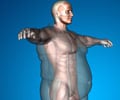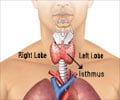
‘Endocrine disruptors are found in our everyday products such as plastics, detergents, cosmetics, toys, metal food cans, and pesticides, that pose a greater health risk to humans.’
Tweet it Now
Endocrine disruptors is the name given to compounds that disrupt the hormone-controlled signal pathways and negatively impact health. These substances are also suspected of involvement in the development of metabolic diseases such as obesity, fatty liver, high cholesterol levels in the blood and diabetes. There has been very little research conducted to date as to whether and by what route endocrine disruptors influence these metabolic processes. Consequently, no validated methods exist for the assessment of their metabolic effect. The aim of the EU research project EDCMET is to develop validated in silico, in vitro and in vivo methods for the evaluation of the metabolic effects of endocrine disruptors. Experts from different disciplines are using a wide range of techniques, ranging from computer-assisted calculation methods, and cell culture systems to current animal models and the analysis of epidemiological data. Research will focus on energy and fat metabolism in terms of the path by which the receptors of the cells regulate these processes through their interaction with foreign substances.
EDCMET is being funded as part of the EU's Horizon 2020 research program (Grant Agreement No. 825762). It is one of the eight projects in the area of "new testing and screening methods for the identification of chemicals with endocrine effects". The EDCMET project involving scientific establishments from eight EU countries is coordinated by the A.I. Virtanen Institute of the University of Eastern Finland. In addition to conducting experimental work, the BfR will organize and coordinate the communication of scientific findings for expert circles, the national and international regulatory authorities, the stakeholders and the public at large.
Source-Eurekalert













